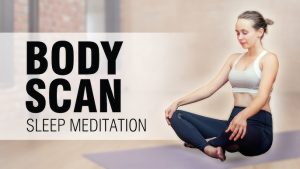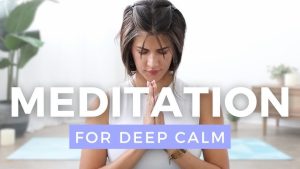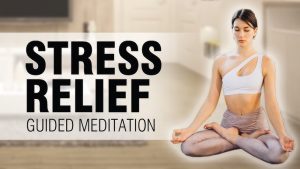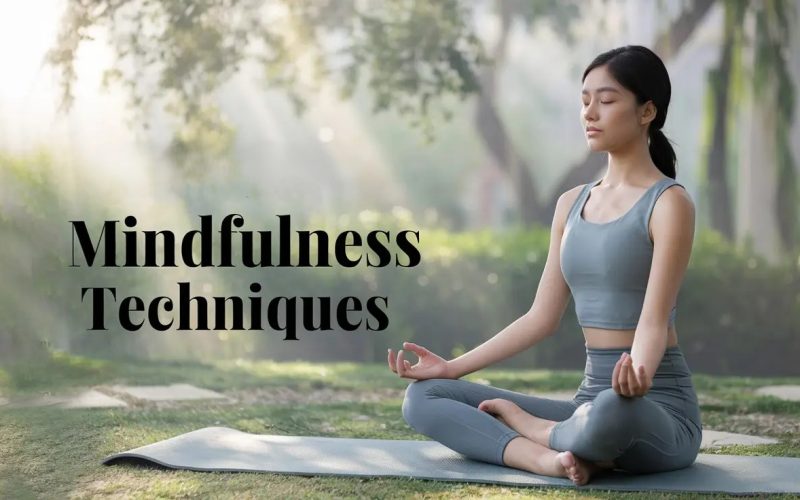Introduction
In today’s fast-paced world, stress has become an almost constant companion. From work pressures to personal commitments, it’s easy to feel overwhelmed by the demands of daily life. However, mindfulness is emerging as a powerful tool to combat stress and improve overall well-being. By focusing on the present moment and adopting mindfulness practices, individuals can reduce stress, increase mental clarity, and foster emotional balance.
In this article, we will explore several mindfulness techniques that can help you reduce stress in your daily life. These techniques are simple, effective, and easy to integrate into any routine. Whether you’re looking for a quick stress reliever or a long-term strategy for maintaining mental health, mindfulness has something to offer.
What is Mindfulness?

Mindfulness is the practice of paying full attention to the present moment, without judgment. It involves being aware of your thoughts, feelings, bodily sensations, and the surrounding environment. The goal is not to eliminate stress or difficult emotions, but to acknowledge them and respond in a calm, balanced manner. Mindfulness encourages living in the present rather than worrying about the past or future.
By practicing mindfulness, we can reduce the mental clutter that contributes to stress. This allows us to focus more clearly on what matters and make decisions with a calm, centered mind. Studies show that mindfulness can lower levels of anxiety, improve concentration, and enhance emotional resilience.
Mindfulness Techniques to Reduce Stress
1. Mindful Breathing

One of the simplest and most effective mindfulness techniques is mindful breathing. This practice focuses on the breath, helping to calm the nervous system and promote relaxation. By focusing on your breath, you can anchor yourself in the present moment and reduce feelings of anxiety or stress.
How to practice mindful breathing:
- Sit or lie down in a comfortable position.
- Close your eyes and take a deep breath in through your nose, allowing your lungs to fill with air.
- Slowly exhale through your mouth, releasing tension.
- Continue to focus on the sensation of your breath entering and leaving your body.
- If your mind wanders, gently bring your focus back to your breath.
Mindful breathing can be practiced anytime, anywhere. Even just a few minutes of focused breathing can significantly reduce stress and improve your mental clarity.
2. Body Scan Meditation

Body scan meditation is a mindfulness practice that involves bringing awareness to different parts of your body, from head to toe. It helps you become more attuned to physical sensations and release any built-up tension. This practice is especially helpful for reducing stress-related physical discomfort, such as tight muscles or headaches.
How to practice a body scan:
- Find a quiet, comfortable place to sit or lie down.
- Close your eyes and take a few deep breaths to relax.
- Start by focusing on your toes, noticing any sensations or areas of tension.
- Gradually move up through your body, paying attention to each part, from your feet to your head.
- As you focus on each area, try to release any tension and let go of stress.
Body scan meditation is a great way to unwind after a long day or prepare for sleep, as it helps relax both the body and mind.
3. Mindful Walking

Mindful walking involves bringing awareness to each step you take, turning a simple walk into a meditative practice. This technique is perfect for those who find it difficult to sit still or want to incorporate mindfulness into their daily activities.
How to practice mindful walking:
- Find a quiet place to walk, such as a park or a calm street.
- Walk at a slow, steady pace and pay attention to the sensation of each step.
- Focus on how your feet feel as they make contact with the ground and how your body moves with each step.
- Notice the sights, sounds, and smells around you. Be fully present in the experience.
Mindful walking helps clear your mind, reduce stress, and improve overall well-being. It’s a wonderful way to combine physical activity with mindfulness, allowing you to connect with both your body and the environment.
4. Mindful Eating

Mindful eating is another powerful technique that involves paying full attention to the experience of eating. By slowing down and savoring each bite, you can not only reduce stress but also improve your relationship with food.
How to practice mindful eating:
- Before eating, take a moment to appreciate the food in front of you. Notice its color, texture, and smell.
- As you eat, focus on the taste and texture of each bite. Chew slowly and savor the flavors.
- Pay attention to your hunger and fullness cues. Stop eating when you feel satisfied, not stuffed.
- Avoid distractions like TV or phones during meals to fully engage with the experience.
Mindful eating helps you enjoy food more, reduces overeating, and encourages healthier eating habits, all of which contribute to less stress around meals.
5. Guided Meditation

Guided meditation involves following the instructions of a teacher or app, who leads you through a meditation practice focused on relaxation, stress reduction, or other goals. This technique can be especially helpful for beginners or anyone who finds it difficult to meditate on their own.
How to practice guided meditation:
- Find a quiet, comfortable space where you won’t be disturbed.
- Use a meditation app, such as Calm or Headspace, or listen to a guided session online.
- Follow the instructions provided, focusing on the visualization, breathing, or relaxation techniques offered by the guide.
- Allow yourself to relax and release any tension as you follow the meditation.
Guided meditation is an easy way to get started with mindfulness and make it a regular part of your routine. It provides structure and support, making it easier to stay focused and present during the practice.
6. Gratitude Practice

Gratitude is a simple yet powerful practice that can shift your focus from stressors to the positive aspects of your life. By regularly reflecting on what you’re grateful for, you can increase your sense of well-being and reduce stress.
How to practice gratitude:
- Each day, take a few moments to think about three things you’re grateful for. These can be big or small, from your family to a good cup of coffee.
- Write them down in a gratitude journal or simply reflect on them silently.
- Allow yourself to fully feel the positive emotions associated with each blessing.
Practicing gratitude helps to reframe your mindset and brings attention to the positive aspects of your life, which can reduce feelings of stress and improve your overall mental health.
Future of Mindfulness Techniques

The future of mindfulness techniques looks promising as more people seek ways to reduce stress in a simple manner. As research continues to show the benefits of mindfulness, more organizations may include it in daily routines at work and school. New technology, like mobile apps and online courses, will make it easier for people to learn and practice mindfulness anytime and anywhere. These tools can offer guided sessions, tracking progress, and reminders to take a mindful moment during busy days. In the coming years, mindfulness may become a standard part of health care and education, helping people of all ages manage stress better. With its simple methods and clear benefits, the future points to a more mindful, balanced, and peaceful way of living for everyone.
Comparative Table: Quick Mindfulness Practices for Stress Reduction
| Mindfulness Technique | Description | Benefits |
|---|---|---|
| Mindful Breathing | Focused breathing to calm the mind and body | Reduces stress, enhances focus |
| Body Scan Meditation | Awareness of bodily sensations to release tension | Relieves physical stress, improves relaxation |
| Mindful Eating | Paying full attention to food and eating process | Reduces overeating, improves digestion |
| Guided Meditation | Following a meditation guide for relaxation | Eases anxiety, improves mental clarity |
| Gratitude Practice | Reflecting on things you are thankful for daily | Boosts mood, reduces stress |
Conclusion
Mindfulness techniques offer a simple, yet powerful way to reduce stress in daily life. Whether it’s through mindful breathing, body scan meditation, mindful eating, or other practices, incorporating mindfulness into your routine can help you cultivate mental clarity and improve your emotional well-being. By practicing mindfulness regularly, you can build resilience to stress, improve your focus, and enhance your overall quality of life.
These techniques are easy to implement and can be practiced anywhere, anytime, making them perfect for today’s busy lifestyle. By embracing mindfulness, you can create a more peaceful, balanced life in 2025 and beyond.
Call to Action
Ready to reduce stress and improve your well-being with mindfulness? Start practicing one of these techniques today and feel the difference in your mental clarity and emotional health. Visit our website for more tips and resources on mindfulness and stress reduction.












